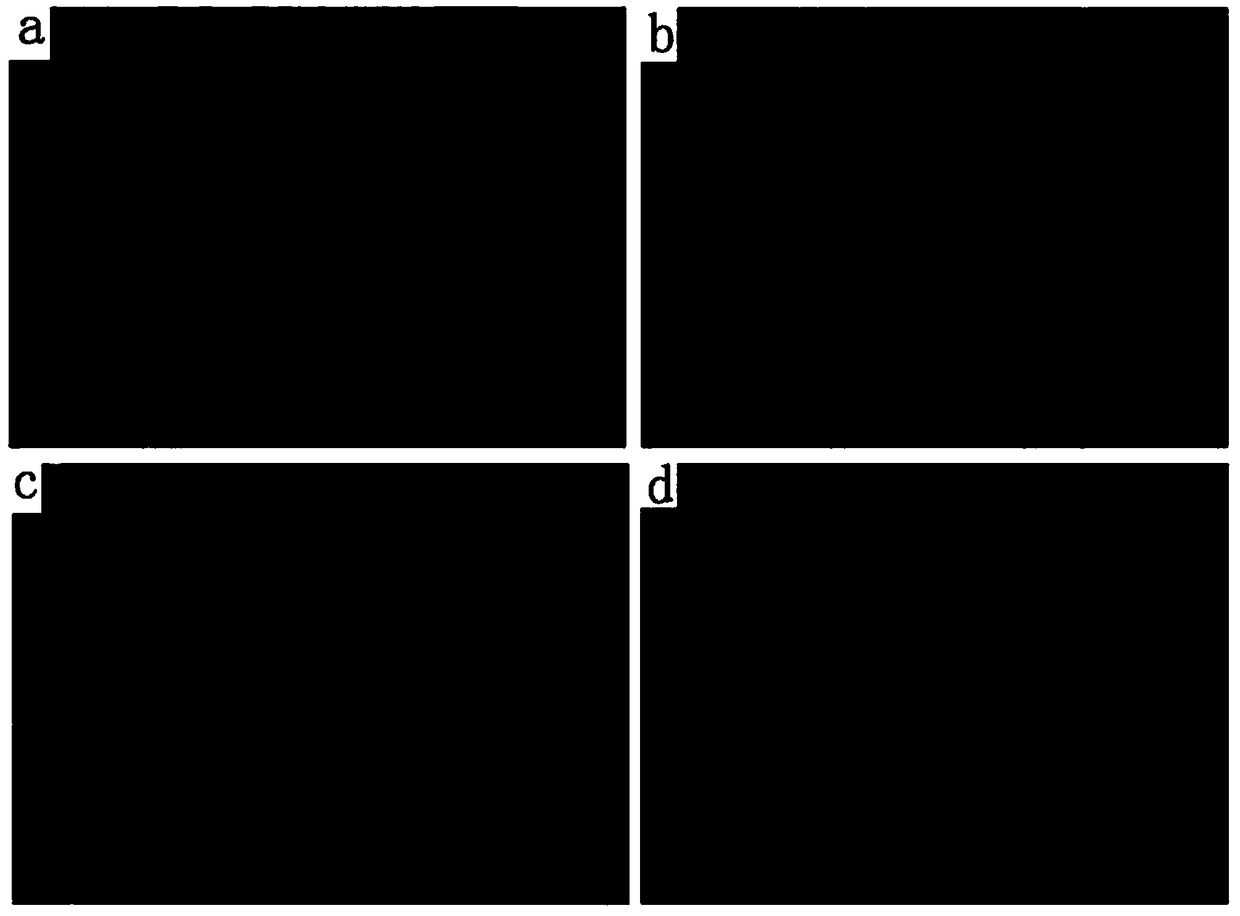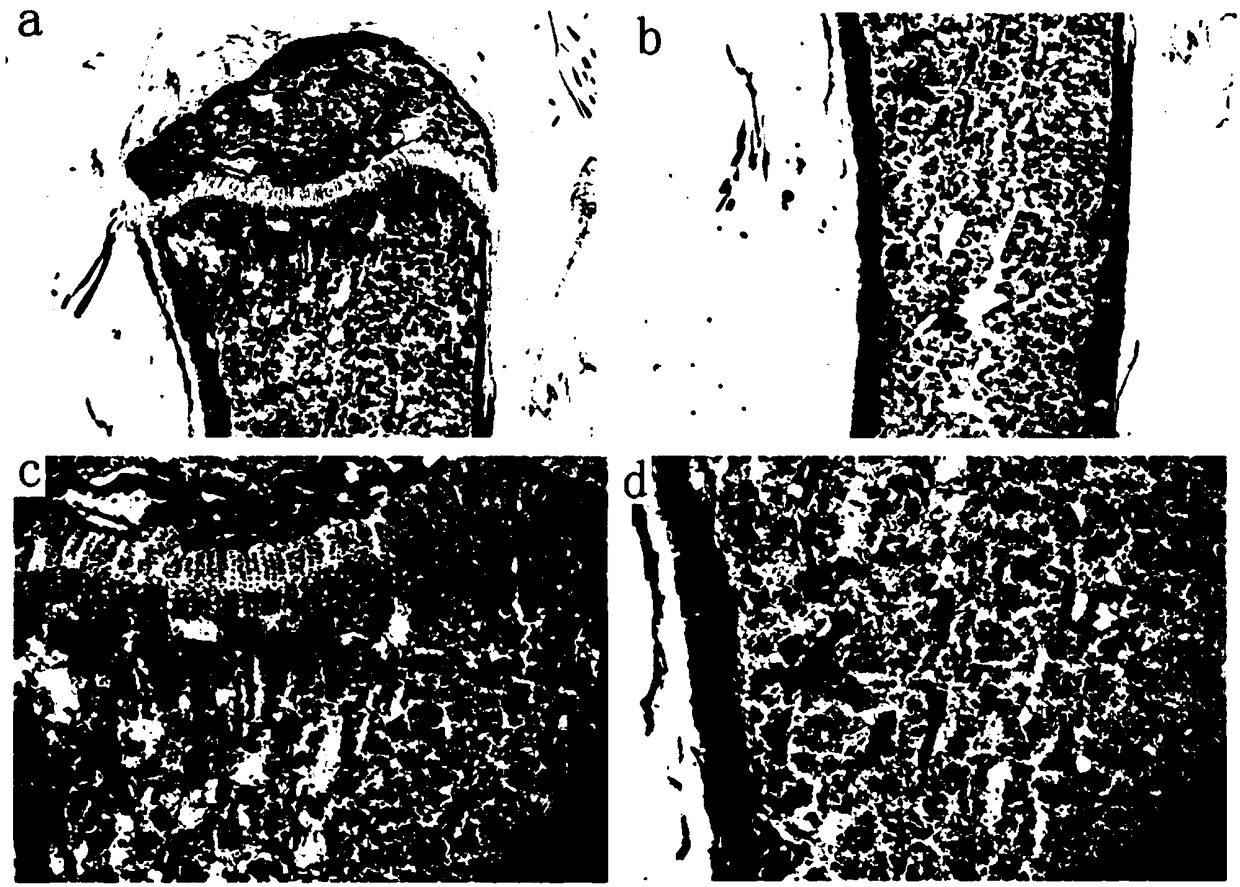Method for quickly preparing hard tissue slice and application of the method
A hard tissue and slicing technology, applied in the field of biomedicine, can solve the problems of complex preparation process, long time-consuming and high cost, and achieve the effects of simple and easy operation, short time-consuming and low cost.
- Summary
- Abstract
- Description
- Claims
- Application Information
AI Technical Summary
Problems solved by technology
Method used
Image
Examples
Embodiment 1
[0051] Example 1 Preparation of tibial hard tissue slices of 3-month-old mice
[0052] 1. Mouse tibia tissue acquisition, fixation, embedding and quick freezing in liquid nitrogen
[0053](1) Execute the mice, take the tibia, remove excess soft tissue, place in pre-cooled 4% paraformaldehyde (PFA), store and fix at 4°C overnight;
[0054] (2) Take out the fixed sample, wash it three times with PBS, each time for 5 minutes, then soak it in 15% (w / v) sucrose solution for 1 hour, then transfer to 30% (w / v) sucrose overnight at 4°C in the solution;
[0055] (3) Place the sucrose-soaked sample in the embedding box containing OCT embedding agent, and adjust the sample to a suitable orientation, and mark the position where sectioning is required;
[0056] (4) Take a cell culture dish with a diameter of 10 cm and place it in a foam box containing liquid nitrogen, so that the culture dish floats on the liquid nitrogen and pre-cool for 1 minute, and pay attention to avoid liquid nitro...
Embodiment 2
[0080] Example 2 Preparation of 3-month-old rat femoral hard tissue slices
[0081] The mouse in Embodiment 1 was replaced with a rat, and its femur was taken, and other steps were carried out according to Embodiment 1 to prepare rat femoral hard tissue slices.
[0082] According to the method of embodiment 1, the calcein fluorescence color double labeling is carried out to rat femur hard tissue section, the result is as follows Figure 4 as shown, Figure 4 a-d represent fluorescence micrographs at different positions of the rat femur, respectively. In the figure, DAPI-labeled cell nuclei appear blue, and calcein fluorescently-labeled newborn bone appears green. The results show that the rat femur slices obtained by this method have complete bone Comparing with the bone marrow structure, the calcein fluorescently labeled new bone is clearly visible, which can fully satisfy the downstream experimental analysis.
PUM
| Property | Measurement | Unit |
|---|---|---|
| thickness | aaaaa | aaaaa |
Abstract
Description
Claims
Application Information
 Login to View More
Login to View More - R&D
- Intellectual Property
- Life Sciences
- Materials
- Tech Scout
- Unparalleled Data Quality
- Higher Quality Content
- 60% Fewer Hallucinations
Browse by: Latest US Patents, China's latest patents, Technical Efficacy Thesaurus, Application Domain, Technology Topic, Popular Technical Reports.
© 2025 PatSnap. All rights reserved.Legal|Privacy policy|Modern Slavery Act Transparency Statement|Sitemap|About US| Contact US: help@patsnap.com



